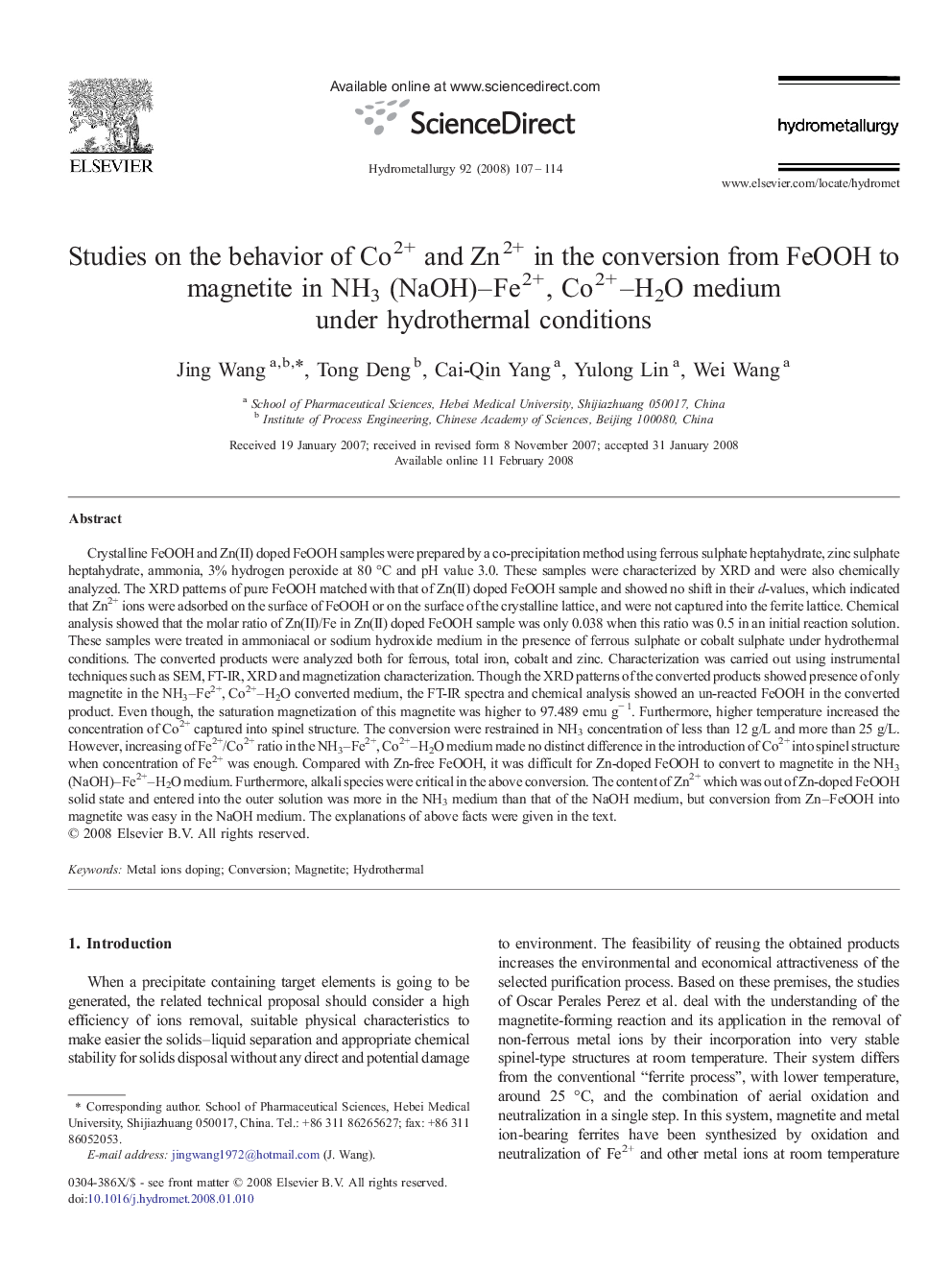| کد مقاله | کد نشریه | سال انتشار | مقاله انگلیسی | نسخه تمام متن |
|---|---|---|---|---|
| 213285 | 462091 | 2008 | 8 صفحه PDF | دانلود رایگان |

Crystalline FeOOH and Zn(II) doped FeOOH samples were prepared by a co-precipitation method using ferrous sulphate heptahydrate, zinc sulphate heptahydrate, ammonia, 3% hydrogen peroxide at 80 °C and pH value 3.0. These samples were characterized by XRD and were also chemically analyzed. The XRD patterns of pure FeOOH matched with that of Zn(II) doped FeOOH sample and showed no shift in their d-values, which indicated that Zn2+ ions were adsorbed on the surface of FeOOH or on the surface of the crystalline lattice, and were not captured into the ferrite lattice. Chemical analysis showed that the molar ratio of Zn(II)/Fe in Zn(II) doped FeOOH sample was only 0.038 when this ratio was 0.5 in an initial reaction solution. These samples were treated in ammoniacal or sodium hydroxide medium in the presence of ferrous sulphate or cobalt sulphate under hydrothermal conditions. The converted products were analyzed both for ferrous, total iron, cobalt and zinc. Characterization was carried out using instrumental techniques such as SEM, FT-IR, XRD and magnetization characterization. Though the XRD patterns of the converted products showed presence of only magnetite in the NH3–Fe2+, Co2+–H2O converted medium, the FT-IR spectra and chemical analysis showed an un-reacted FeOOH in the converted product. Even though, the saturation magnetization of this magnetite was higher to 97.489 emu g− 1. Furthermore, higher temperature increased the concentration of Co2+ captured into spinel structure. The conversion were restrained in NH3 concentration of less than 12 g/L and more than 25 g/L. However, increasing of Fe2+/Co2+ ratio in the NH3–Fe2+, Co2+–H2O medium made no distinct difference in the introduction of Co2+ into spinel structure when concentration of Fe2+ was enough. Compared with Zn-free FeOOH, it was difficult for Zn-doped FeOOH to convert to magnetite in the NH3 (NaOH)–Fe2+–H2O medium. Furthermore, alkali species were critical in the above conversion. The content of Zn2+ which was out of Zn-doped FeOOH solid state and entered into the outer solution was more in the NH3 medium than that of the NaOH medium, but conversion from Zn–FeOOH into magnetite was easy in the NaOH medium. The explanations of above facts were given in the text.
Journal: Hydrometallurgy - Volume 92, Issues 3–4, June 2008, Pages 107–114